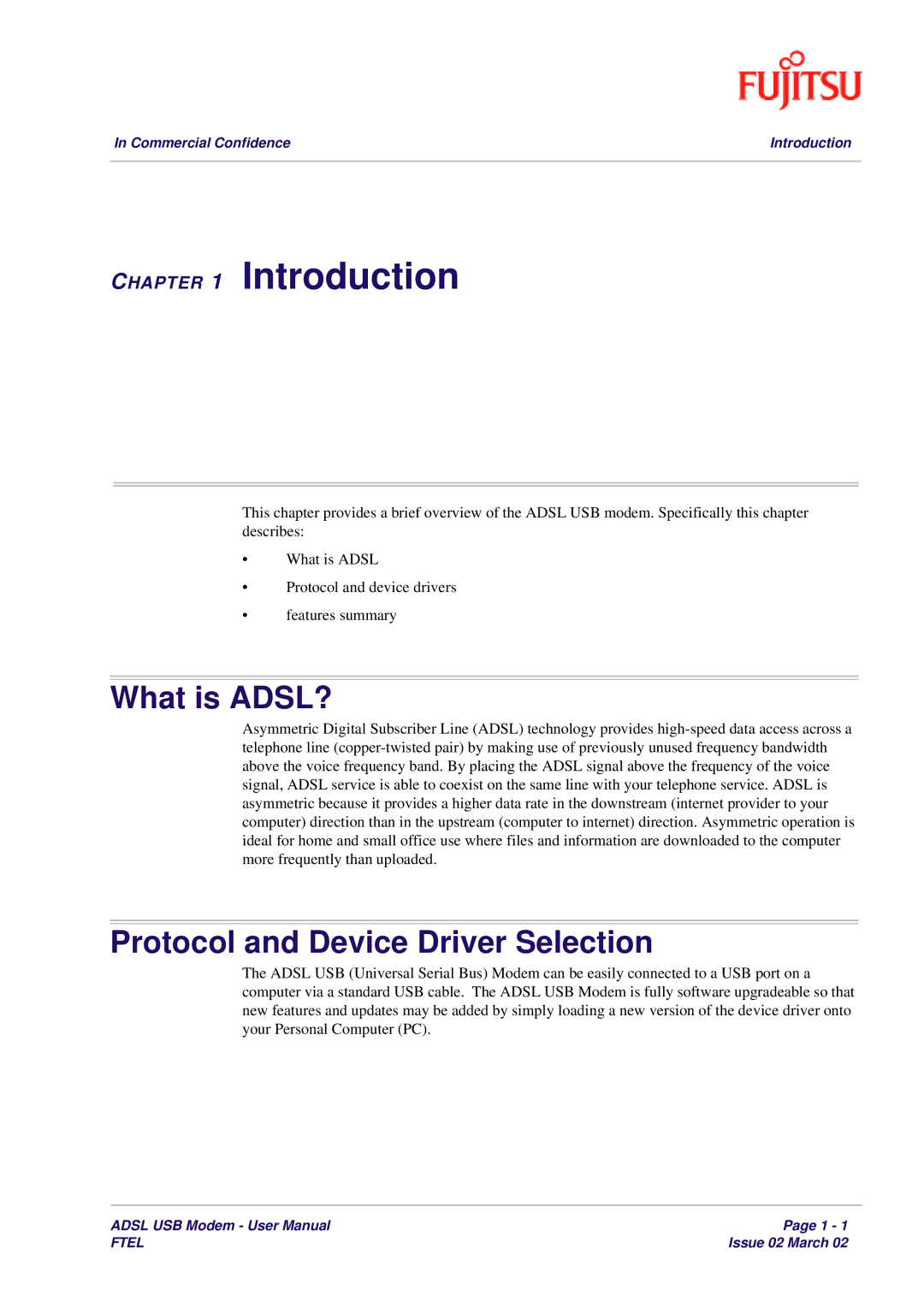
In Commercial Confidence | Introduction |
|
|
CHAPTER 1 Introduction
This chapter provides a brief overview of the ADSL USB modem. Specifically this chapter describes:
•What is ADSL
•Protocol and device drivers
•features summary
What is ADSL?
Asymmetric Digital Subscriber Line (ADSL) technology provides
Protocol and Device Driver Selection
The ADSL USB (Universal Serial Bus) Modem can be easily connected to a USB port on a computer via a standard USB cable. The ADSL USB Modem is fully software upgradeable so that new features and updates may be added by simply loading a new version of the device driver onto your Personal Computer (PC).
ADSL USB Modem - User Manual | Page 1 - 1 |
FTEL | Issue 02 March 02 |
